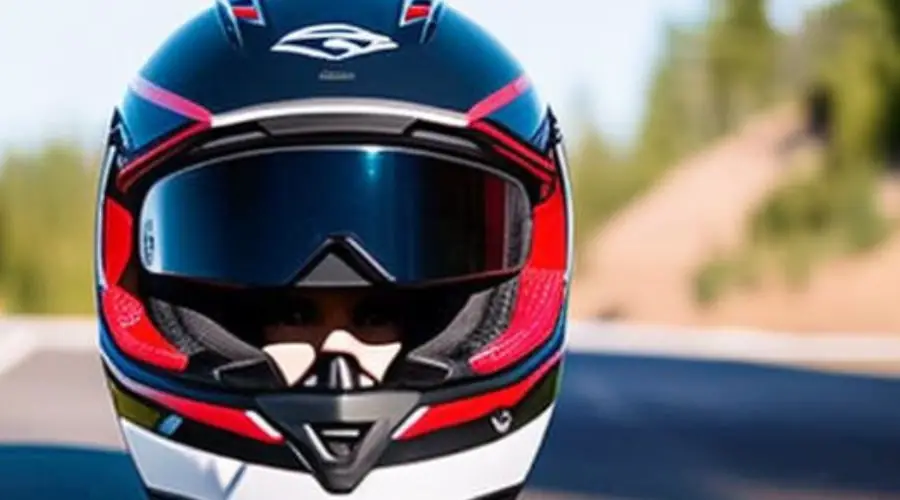When it comes to motorcycle helmets, there are many different types to choose from. One of the most popular options is the full-face helmet. This type of helmet offers full coverage of the face and head, providing the rider with the most protection. However, is a full-face helmet always the best choice? In this article, we’ll explore the pros and cons of full-face helmets and help you determine whether this type of helmet is right for you.
What is a Full-Face Helmet?
A full-face helmet is a type of motorcycle helmet that provides complete coverage of the face and head. This includes a chin bar, which extends from the bottom of the helmet to protect the rider’s chin and jaw. The visor on a full-face helmet also provides protection for the eyes and face, helping to shield the rider from wind, rain, and debris.
Pros of Full-Face Helmets
- Maximum Protection: Full-face helmets offer the most protection for riders. They provide coverage for the entire head, including the chin and jaw, which are often left exposed in other helmet types. This makes them ideal for high-speed riding or racing.
- Comfortable: Full-face helmets are often more comfortable than other helmet types. They provide a snug fit, which can help reduce wind noise and fatigue. The chin bar also helps to keep the helmet in place, reducing the risk of it shifting or sliding during a ride.
- Aerodynamic: Full-face helmets are designed to be aerodynamic, which can help reduce wind drag and improve overall performance. This makes them ideal for riders who want to maximize their speed and performance on the road or track.
Cons of Full-Face Helmets
- Restricted Vision: One of the biggest drawbacks of full-face helmets is that they can restrict the rider’s vision. The chin bar can make it more difficult to see things in the rider’s peripheral vision, and the visor can become foggy or dirty, making it harder to see in certain conditions.
- Heavier: Full-face helmets are often heavier than other helmet types due to the additional materials used to provide full coverage. This can make them more cumbersome to wear, particularly for longer rides or races.
- Less Ventilation: Full-face helmets are designed to provide maximum coverage, which can make them less breathable than other helmet types. This can result in the rider feeling hot and uncomfortable, particularly in warmer weather.
Who Should Use a Full-Face Helmet?
Full-face helmets are ideal for riders who are looking for maximum protection and performance. They are often worn by racers or riders who engage in high-speed riding. However, full-face helmets may not be the best choice for everyone. Riders who are more concerned about comfort or ventilation may prefer other helmet types.

Choosing the Right Full-Face Helmet
If you decide that a full-face helmet is a right choice for you, there are several things to consider when choosing a helmet. These include:
- Fit: It’s important to choose a helmet that fits properly and provides a snug, comfortable fit.
- Safety: Look for helmets that meet safety standards set by organizations like DOT or Snell.
- Features: Consider the features you need, such as a visor that can be easily removed or replaced.
- Ventilation: Look for helmets that provide adequate ventilation to keep you cool and comfortable during rides.
FAQs:
Are full-face helmets safer than other helmet types?
Yes, full-face helmets offer the most protection for riders, including coverage of the chin and jaw, which are often left exposed in other helmet types.
Do full-face helmets restrict vision?
Yes, the chin bar on full-face helmets can make it more difficult to see things in the rider’s peripheral vision, and the visor can become foggy or dirty, making it harder to see in certain conditions.
Are full-face helmets more comfortable than other helmet types?
Full-face helmets are often more comfortable than other helmet types because they provide a snug fit, which can help reduce wind noise and fatigue. However, they may not be as breathable in warmer weather.
Can full-face helmets be used for everyday riding?
Yes, full-face helmets can be used for everyday riding, but riders who are more concerned about comfort or ventilation may prefer other helmet types.
What should I look for when choosing a full-face helmet?
When choosing a full-face helmet, look for factors like fit, safety, features, and ventilation to ensure that you choose the right helmet for your needs.
Conclusion
Full-face helmets offer the most protection for riders and are often the preferred choice for high-speed riding or racing. However, they may not be the best choice for everyone. Riders who are more concerned about comfort or ventilation may prefer other helmet types. When choosing a full-face helmet, it’s important to consider factors like fit, safety, features, and ventilation to ensure that you choose the right helmet for your needs.
Ultimately, the decision of whether to use a full-face helmet or not is a personal one. However, it’s important to remember that wearing a helmet of any type is critical for rider safety. Make sure to choose a helmet that provides the right level of protection and comfort for your needs.
Helmetslab is a website that focuses on providing in-depth reviews and information about different types of helmets, including motorcycle helmets and others helmets. I am writing a post with proper research on the info that helps helmet users.
